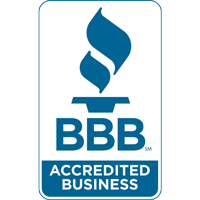
You shouldn’t have to give up comfort or empty your wallet to keep your house at the right setting during summer weather.
But what is the ideal temp, exactly? We discuss suggestions from energy experts so you can choose the best temperature for your loved ones.
Here’s what we suggest for the most energy-efficient setting for air conditioning in Hodgenville.
Recommended Thermostat Settings for Summer
Most households find using the thermostat at 72-73 degrees is most comfortable. However, if there’s a major difference between your indoor and outside temps, your cooling expenses will be greater.
These are our suggestions based on the U.S. Department of Energy (DOE) and ENERGY STAR®.
While at home: 78 degrees. While that sounds warm, there are approaches you can keep your residence pleasant without having the air conditioner on frequently.
Keeping windows and window treatments down during the day keeps cool air where it belongs—indoors. Some window treatments, like honeycomb shades or plantation shutters, are made to offer added insulation and better energy conservation.
If you have ceiling fans in your residence, the DOE says you can increase thermostat temps about 4 degrees higher without compromising comfort. That’s because they refresh with a windchill effect. Because they cool people, not spaces, turn them off when you move from a room.
If 78 degrees still feels too uncomfortable on the surface, try running an experiment for approximately a week. Get started by raising your temperature to 78 degrees while you’re at your residence. Then, steadily decrease it while adhering to the suggestions above. You might be shocked at how refreshed you feel at a higher temperature setting.
While away: 88 degrees. There’s no need to keep the AC going all day while your residence is empty. Moving the setting 7–10 degrees higher can save you an estimated 5–15% on your electrical costs, according to the DOE.
When you arrive home, don’t be tempted to put your thermostat below 78 to cool your residence more rapidly. This isn’t effective and typically produces a higher electricity bill.
A programmable thermostat is a helpful way to keep your temperature in check, but you have to set programs. If you don’t use programs, you run the risk of forgetting to change the set temperature when you leave.
If you want a hassle-free resolution, think over installing a smart thermostat. This thermostat links with your phone, so it knows when you’re at your house and when you’re away. Then it intuitively adjusts temperature settings for the best savings. How much exactly? Usually $180 annually on heating and cooling, according to ENERGY STAR.
Another plus of using a smart thermostat? You can use your phone to monitor and regulate temperature settings from nearly anywhere.
While sleeping: Around 70 degrees. While ENERGY STAR recommends 82 degrees, that might be unpleasant for most families. Many people sleep better when their sleeping area is cold, so that’s why the National Sleep Foundation suggests 60–67 degrees. But that may be too cool, depending on your clothing and blanket preference.
We advise trying an equivalent test over a week, moving your thermostat higher and gradually decreasing it to locate the ideal temp for your family. On cool nights, you may learn keeping windows open at night and relying on a ceiling fan is a superior idea than using the AC.
More Approaches to Save Energy During Hot Weather
There are additional approaches you can conserve money on utility bills throughout the summer.
- Install an energy-efficient air conditioning system. Central air conditioners only last about 12–15 years and lose efficiency as they become older. A new air conditioner can keep your house cooler while keeping electricity expenses low.
- Set yearly air conditioner service. Regular air conditioner maintenance keeps your system working like it should and might help it run at better efficiency. It might also help prolong its life expectancy, since it allows professionals to pinpoint seemingly insignificant issues before they cause a major meltdown.
- Replace air filters regularly. Follow manufacturer instructions for replacing your air filter. A dusty filter can lead to your system short cycling, or switch on and off too often, and drive up your energy.
- Check attic insulation levels. Almost 90% of homes in the U.S. don’t have enough insulation, according to the Insulation Institute. Most southern climates require 13–14” of attic insulation, while northern climates require 16–18”.
- Have your ductwork inspected. Ductwork that has separated over time can leak cool air into your attic, walls or crawl space. This can result in huge comfort problems in your residence, including hot and cold spots.
- Seal holes, doors and windows. Keep warm air where it should be by closing cracks. You can also caulk or weather strip doors to seal more cold air indoors.
Use Less Energy During Warm Weather with Phelps Heating & Cooling, Inc.
If you need to conserve more energy during warm weather, our Phelps Heating & Cooling, Inc. professionals can help. Give us a call at 270-358-3167 or contact us online for more information about our energy-saving cooling products.



